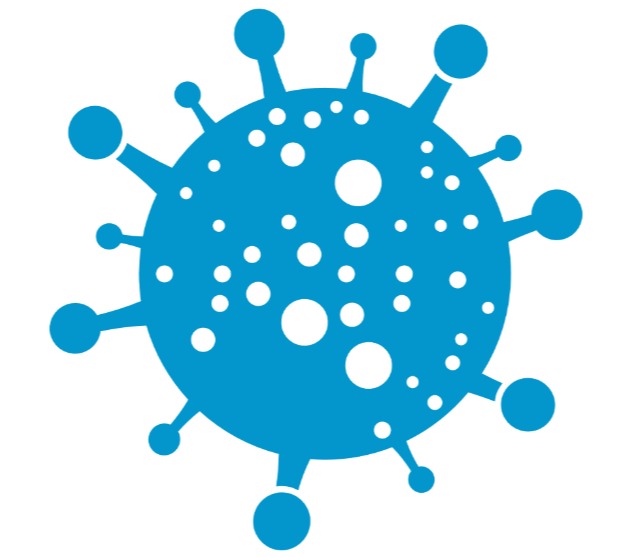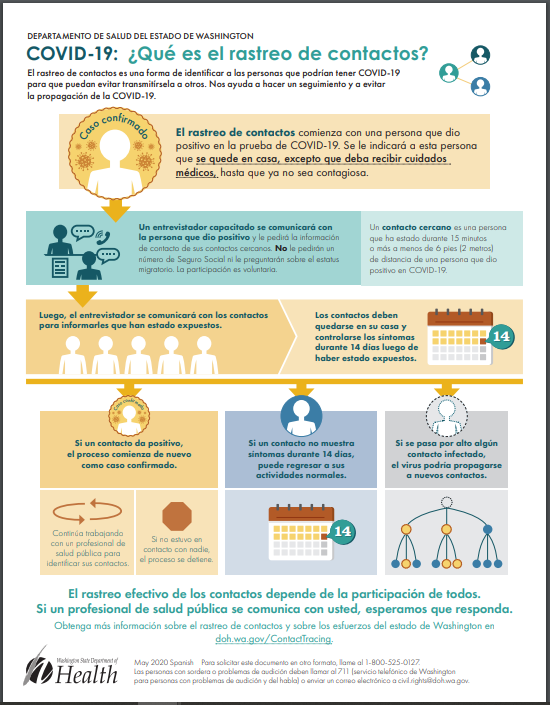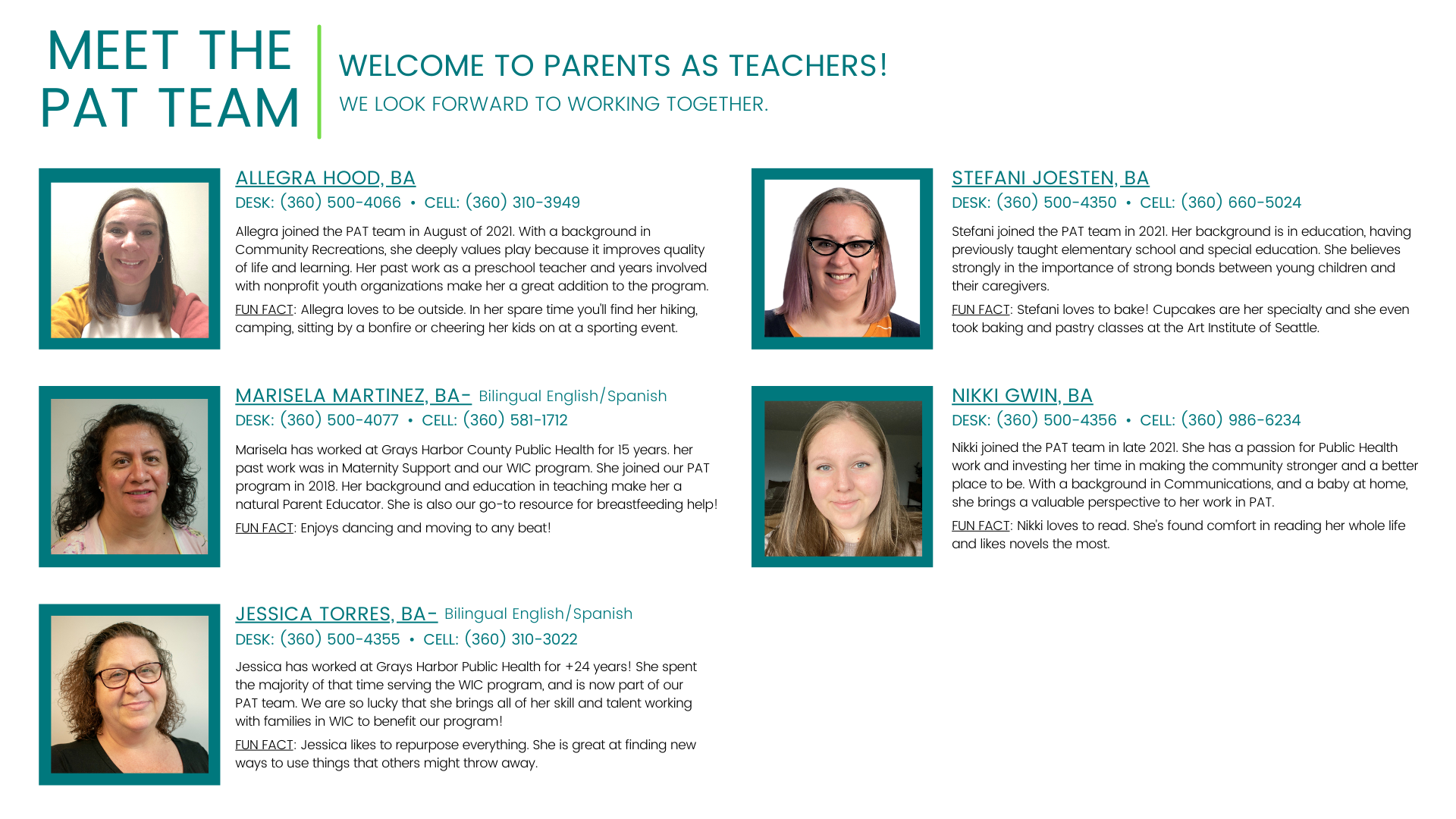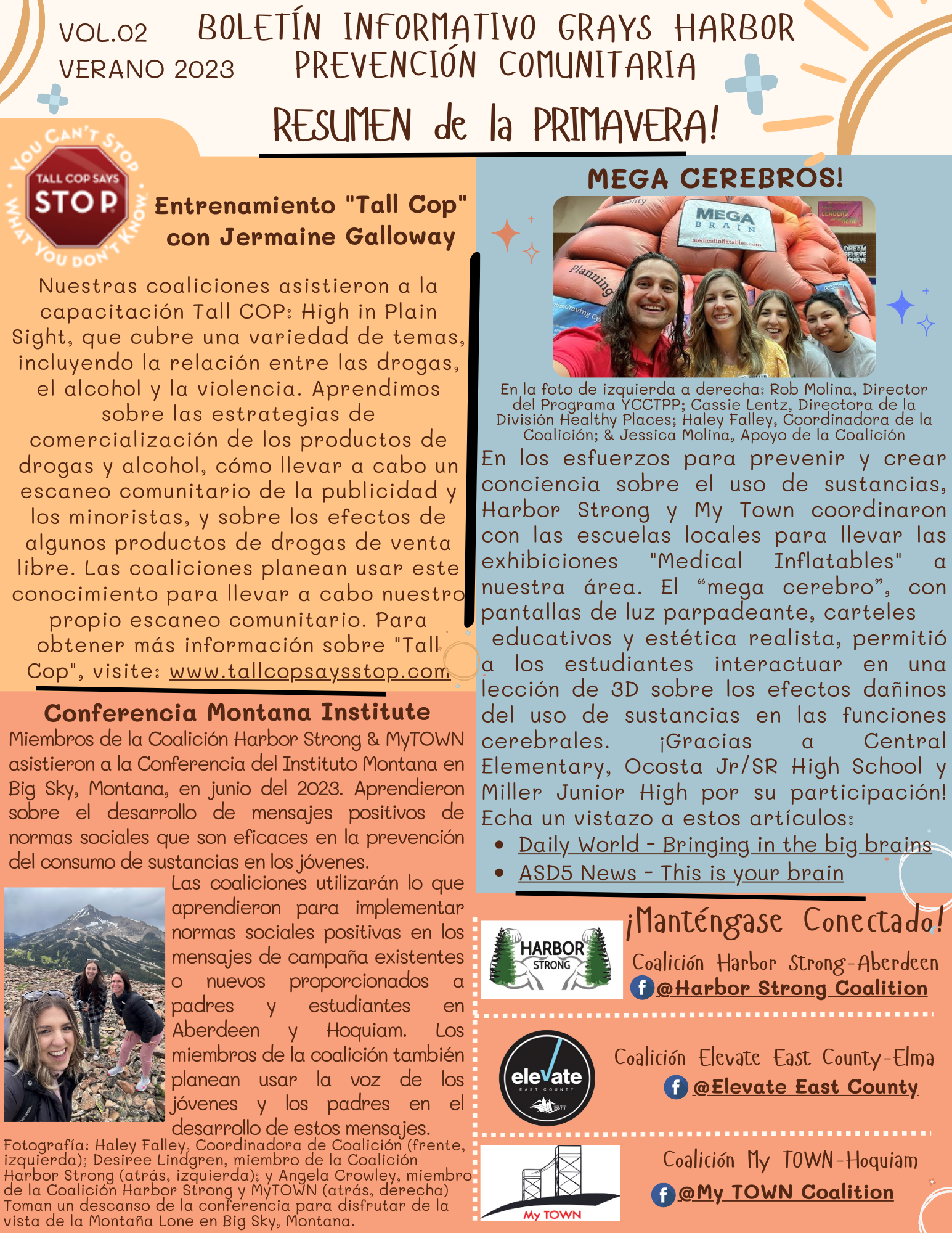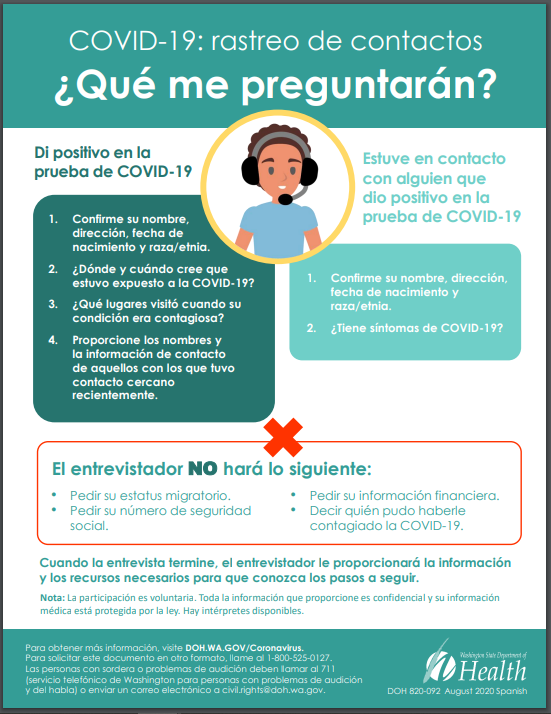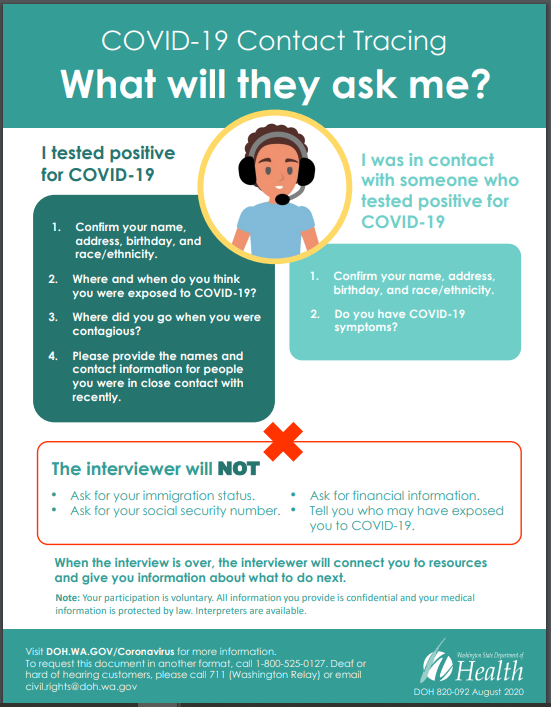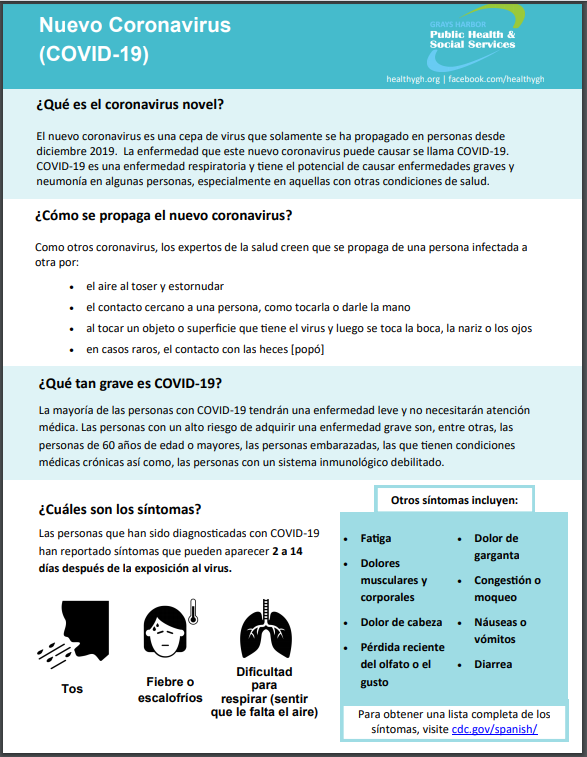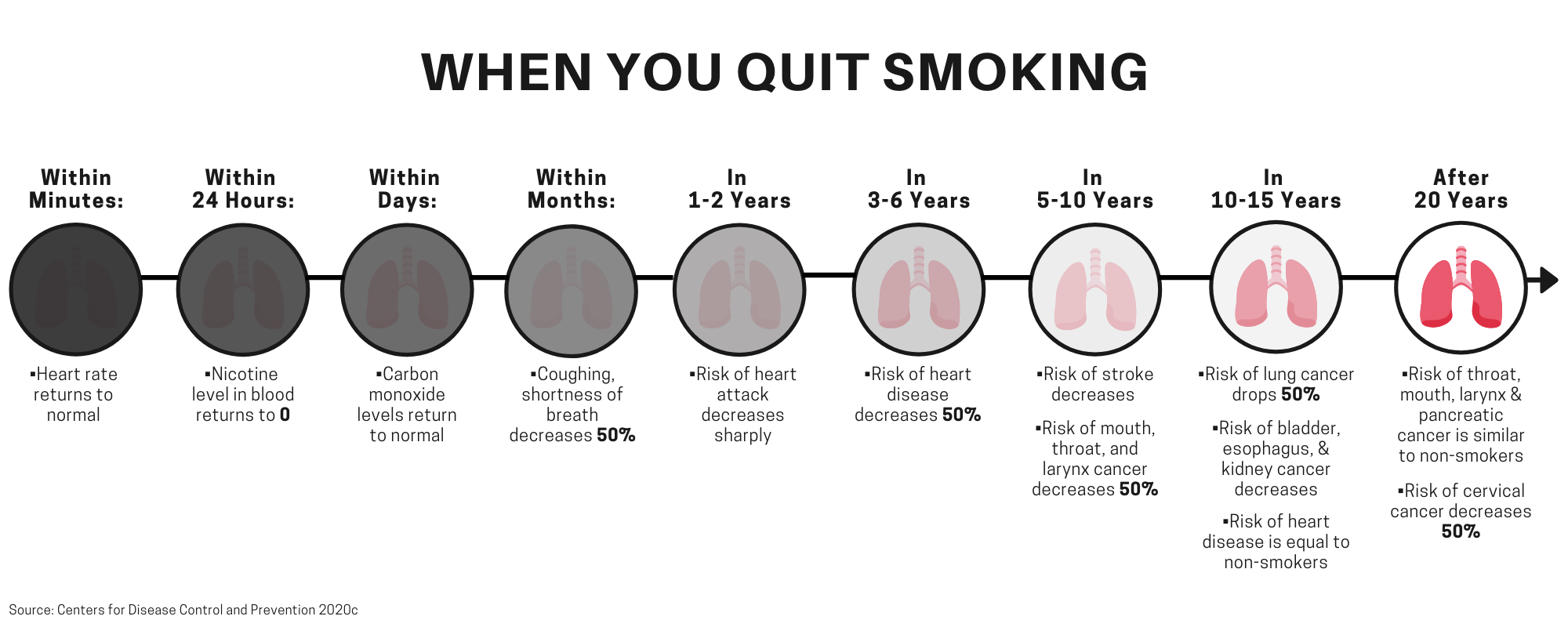Novel Coronavirus (COVID-19) Español
Grays Harbor County Public Health & Social Services Department
El Programa de Acceso Puente de los Centros para el Control y la Prevención de Enfermedades (CDC) brinda acceso continuo a las vacunas COVID-19 sin costo para los aproximadamente 25 a 30 millones de adultos que de otro modo habrían perdido el acceso ahora que estos productos han pasado al mercado comercial.
Los adultos con seguro insuficiente y sin seguro ahora pueden acceder a la vacuna COVID-19 a través del Programa Bridge Access, que incluye una asociación con CVS, Walgreens, otras farmacias en todo Washington y proveedores adicionales de vacunas para adultos. El Programa Bridge Access de los CDC proporciona vacunas contra el COVID-19 sin costo a adultos sin seguro médico y a adultos cuyo seguro no cubre todos los costos de la vacuna contra el COVID-19. Obtenga toda la información en https://www.cdc.gov/vaccines/programs/bridge/index.html.
Las vacunas contra el COVID-19 sin costo a través de este programa estarán disponibles hasta el 31 de diciembre de 2024, hasta agotar existencias. En las próximas semanas se realizarán actualizaciones de https://www.vaccines.gov/ para incluir todas las ubicaciones de farmacias del Programa Bridge Access.
Todos los niños menores de 18 años tienen acceso a las vacunas COVID-19 a través del Programa de Vacunación Infantil sin costo para el paciente.
¿Tiene preguntas sobre COVID-19?
Para consultas sobre vacunas, pruebas, aislamiento y cuarentena relacionadas con COVID-19, comuníquese con la línea COVID-19 del Departamento de Salud del Estado de Washington [DOH]:
Salud Pública de Grays Harbor continuará actualizando el sitio web y la página de Facebook.com/GHPublicHealth, con lo último sobre COVID-19 noticias y recomendaciones, según sea necesario.
Vacunas COVID-19 para las personas que no pueden salir de casa
El servicio de vacunación contra COVID-19 en casa está disponible para quienes no puedan transportarse. Para solicitar el servicio de vacunación en el hogar, llame al Departamento de Salud al 360-532-8631 o llene la solicitud en nuestro sitio web.
Haga clic aquí para ver la página del Departamento de Salud del estado con
Información sobre la seguridad de la vacuna COVID-19:
Sistema para reportar incidentes adversos por la vacuna
Posibles efectos secundarios
¿Dónde se puede hacer la prueba de COVID-19?
Directorio de lugares para hacerse la prueba COVID-19
Su médico de cabecera, la clínica local o el distrito escolar pueden tener pruebas disponibles. Consúltelos cuando otras fuentes no estén disponibles.
Las pruebas caseras:
Del estado: https://www.sayyescovidhometest.org/es El programa termina el 11 de mayo.
Las pruebas para hacerse la prueba en casa también están disponibles en las sucursales de la Biblioteca Regional de Timberland.
¿En dónde vacunarse?
- Entre en la página vaccinelocator.doh.wa.gov 4. Ponga el código postal para encontrar el centro de vacunación más conveniente para usted.
¿Qué hacer si estuvo expuesto?
Para la cuarentena, siga las siguientes recomendaciones que ofrece el CDC:
- https://espanol.cdc.gov/coronavirus/2019-ncov/your-health/isolation.html
¿Qué hacer si resulta positivo?
Para la cuarentena, siga las siguientes recomendaciones que ofrece el CDC:
¿Cuáles son los síntomas de COVID-19?
https://espanol.cdc.gov/coronavirus/2019-ncov/symptoms-testing/symptoms.html
¿Que pasa si alguien no tiene un lugar seguro para el aislamiento o la cuarentena?
Si necesita un lugar seguro para aislarse o ponerse en cuarentena, comuníquese con la línea directa estatal COVID-19 al (800) 525-0127.
